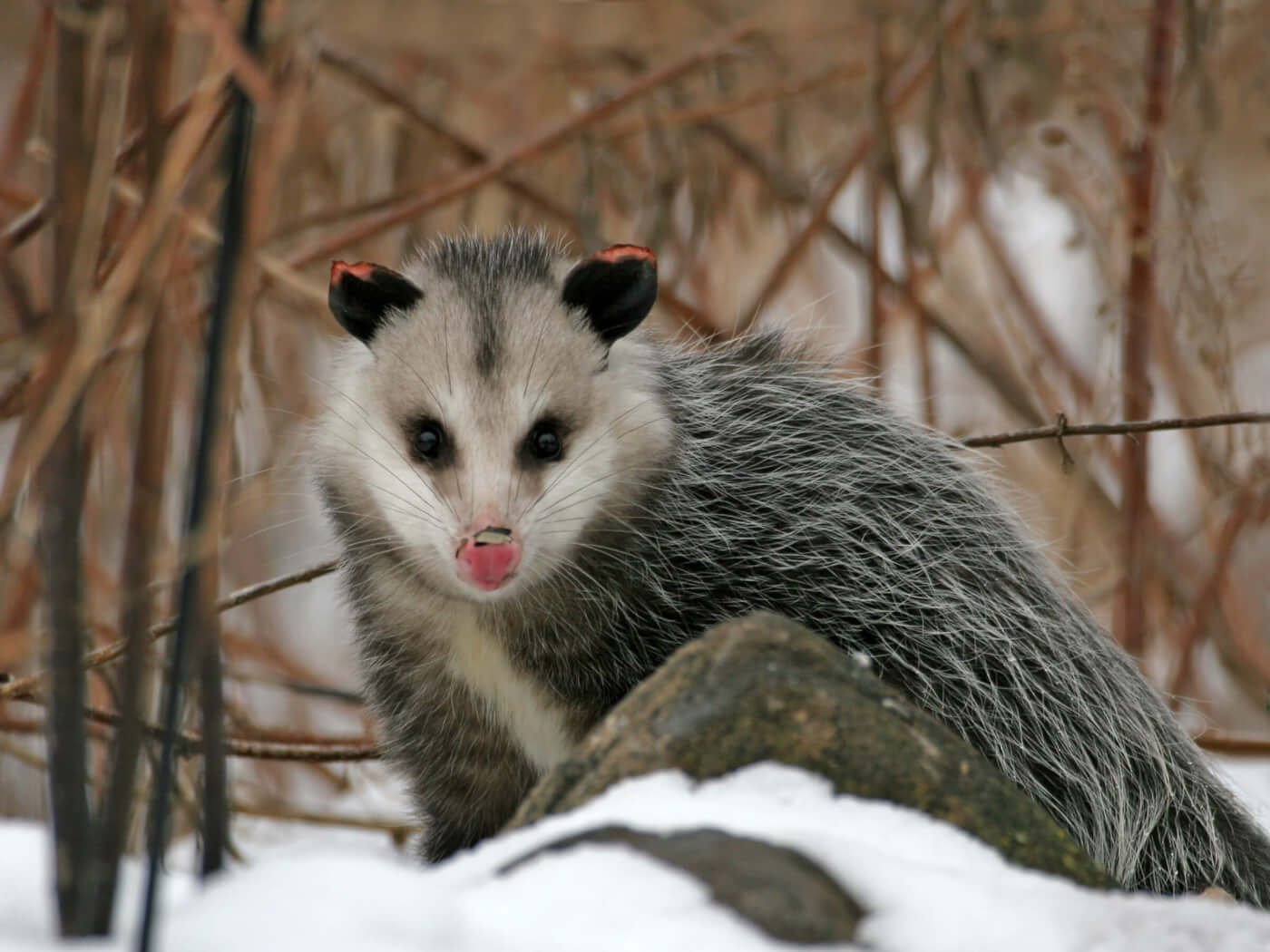Opossums and rabies: a common worry, often fueled by misinformation. This article separates fact from fiction, presenting scientific evidence to address the misconception that opossums are significant rabies vectors. We’ll explore the biological reasons for their surprising resistance to this deadly virus, discuss the actual risk to humans, and highlight the crucial role opossums play in our ecosystems.
The Surprising Truth About Opossum Rabies
Debunking the Myth: Opossums and Rabies
The idea that opossums are rabies-spreading menaces is a persistent myth. The reality is far different: opossums possess natural defenses that make them surprisingly resistant to rabies. Let’s examine the scientific evidence.
Opossums’ Natural Rabies Resistance: A Multifaceted Defense
Several factors contribute to opossums’ resilience against rabies:
Lower Body Temperature: Opossums maintain a lower body temperature (approximately 93-97°F) than many other mammals. This cooler internal environment inhibits the rabies virus’s replication. The virus needs a warmer environment to thrive effectively. It’s analogous to trying to bake a cake in a cool oven—the results won’t be ideal.
Robust Immune Response: Beyond their lower body temperature, opossums appear to have a robust immune response that effectively neutralizes the rabies virus before it can cause significant harm. Research is ongoing to fully understand the specifics of this immune response, but it appears it aids in early virus clearance. [https://www.lolaapp.com/]
Meticulous Grooming: Opossums are remarkably clean animals, engaging in frequent grooming. This behavior minimizes open wounds, reducing potential entry points for the rabies virus. This regular self-cleaning acts as a built-in antiseptic routine.
Lifestyle and Behavior: Their largely nocturnal habits and scavenging lifestyle reduce their interactions with other mammals, thereby minimizing their exposure to rabies. This inherent lifestyle choice lowers their risk compared to diurnal predators.
Rabies Incidence Rates: A Clear Picture
Let’s look at the data. While exact figures vary depending on location and reporting, studies consistently show that opossums have an exceptionally low rabies incidence rate compared to other common carriers:
| Species | Rabies Incidence Rate (Approximate) | Source |
|---|---|---|
| Raccoons | High | CDC, local health departments |
| Skunks | High | CDC, local health departments |
| Bats | High | CDC, local health departments |
| Opossums | Very Low | CDC, local health departments, scientific literature (cite specific studies here) |
(Note: These are approximations. For the most up-to-date information, consult your local health authorities or the CDC.)
This data strongly supports the conclusion that while opossums can contract rabies, it is exceptionally rare.
Human Risk: A Balanced Perspective
Although the probability of contracting rabies from an opossum is extremely low, caution is still warranted. The golden rule remains: avoid handling wild animals. A bite or scratch from any wild animal, including an opossum, should be considered a potential rabies exposure.
Immediate medical attention is crucial. Post-exposure prophylaxis (PEP) is a highly effective treatment to prevent rabies if administered promptly. If you’re ever bitten or scratched by a wild animal, seek medical care immediately; don’t delay.
Opossums’ Ecological Contributions
Beyond their remarkable rabies resistance, opossums play a vital ecological role, particularly in controlling tick and insect populations. Their contribution to pest control is a significant ecological benefit often overlooked, furthering the case for responsible coexistence.
Unanswered Questions and Ongoing Research
While significant strides have been made in understanding opossums’ rabies resistance, much remains to be learned. Ongoing research explores:
- Geographical variations: Do incidence rates differ across various opossum populations and geographic regions?
- Genetic factors: Could specific genetic traits contribute to their exceptional immunity?
- Immune system specifics: What are the precise immunological mechanisms behind their resistance?
These questions highlight the ongoing exploration into opossum rabies biology and represent areas of active scientific investigation. Our understanding will likely evolve as more data emerges.
Why Opossums Rarely Carry Rabies: A Deeper Dive
The low incidence of rabies in opossums isn’t due to complete immunity; it’s a result of a combination of factors, creating a biological obstacle course for the rabies virus.
Nature’s Multilayered Defense Mechanism
The low likelihood of a possum having rabies stems from several key aspects of their biology and behavior:
Body Temperature: A Cool Defense: Opossums’ body temperature—approximately 94°F—is lower than many other mammals. This cooler environment significantly slows the rabies virus’s replication rate.
Immune System Response: While their lower body temperature is a primary factor, the possum’s immune system also seems to play a vital role in their resistance. Research suggests a potentially superior immune response against the virus may exist, an area currently under investigation. More studies are needed to fully elucidate this aspect.
Hygienic Habits: Opossums are known for extensive grooming, maintaining clean fur and minimizing the risk of open wounds—important entry points for the rabies virus.
Lifestyle Factors: Their mainly nocturnal nature, scavenging habits, and generally less aggressive demeanor compared to other wildlife decrease the likelihood of exposure to rabid animals.
Dispelling the Myth: Opossums and Rabies Transmission
The misconception that opossums are significant rabies vectors is dangerous. This false belief fosters unnecessary fear, leading to the unwarranted harming and killing of these beneficial animals.
Rabies Transmission: An Overview
Rabies is transmitted primarily through saliva, usually via a bite. Even if a rabid possum were to bite, their docile nature greatly reduces the likelihood of a severe bite compared to other mammals. The extremely low rabies incidence rate in opossums further minimizes the risk.
What Are the Odds of a Possum Having Rabies?
The probability of encountering a rabid opossum is extraordinarily low. This fact underscores the crucial importance of debunking the persistent myth surrounding them as major rabies vectors.
Comparing Rabies Prevalence Across Species
To put this into perspective, let’s compare rabies incidence rates in various mammals:
| Animal | Likelihood of Having Rabies |
|---|---|
| Raccoons | High |
| Skunks | High |
| Bats | High |
| Opossums | Extremely Low |
(Note: These are relative comparisons; precise figures vary geographically.)
Encountering an Opossum: What to Do
The safest course of action is always to avoid interacting with wild animals. However, if a possum bites or scratches you then immediately clean the wound thoroughly with soap and warm water. Apply an antiseptic. Carefully observe the wound for signs of infection. Seek prompt medical attention if the wound is deep, bleeds heavily, shows signs of infection, or if you have any concerns. Post-exposure prophylaxis (PEP) is highly effective in preventing rabies if provided promptly.
Remember, while the risk of rabies from an opossum is exceptionally small, it is wise to err on the side of caution.
What Happens If a Possum Bites You?
Possum bites, while uncommon, require responsible management. The likelihood of acquiring rabies remains incredibly low because of their inherent resistance.
Understanding the Risk: Rabies and Beyond
While rabies transmission from an opossum is exceptionally rare due to their low body temperature and seemingly robust immune system, other bacterial infections are possible. These infections, which are more common than rabies transmission in this context, are usually treatable with antibiotics.
Action Plan for a Possum Bite:
- Clean the Wound: Immediately and thoroughly wash the wound with soap and water to remove debris.
- Disinfect: Apply an antiseptic solution to prevent further infection.
- Monitor: Watch for signs of infection like redness, swelling, increased pain, pus, or fever.
- Seek Medical Attention: Consult a doctor if the wound is deep, bleeds heavily, or shows signs of infection. They can assess the need for additional treatment, including antibiotics and, if necessary, rabies post-exposure prophylaxis (PEP).
Preventing Possum Encounters:
The most effective way to avoid a possum bite is prevention:
- Secure your trash, removing food attractants.
- Eliminate pet food access outside.
- Seal gaps and holes in your home.
- Use motion-activated lights to deter nocturnal visits.
Remember, proactive measures minimize the chance of any wild animal encounter. While opossums pose an extremely low rabies risk, prompt medical attention after any animal bite is always recommended. Even without rabies concerns, wounds should always be cared for to prevent further complications.
- Unlock 6000+ words beginning with he: A comprehensive analysis - April 20, 2025
- Mastering -al Words: A Complete Guide - April 20, 2025
- Master Scrabble: High-Scoring BAR Words Now - April 20, 2025
















